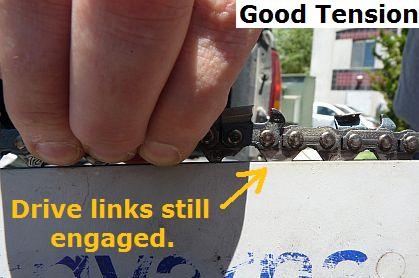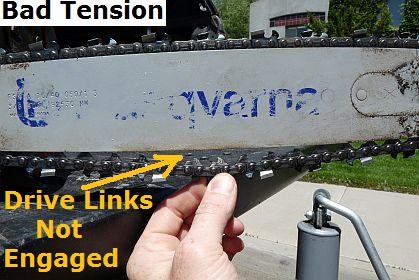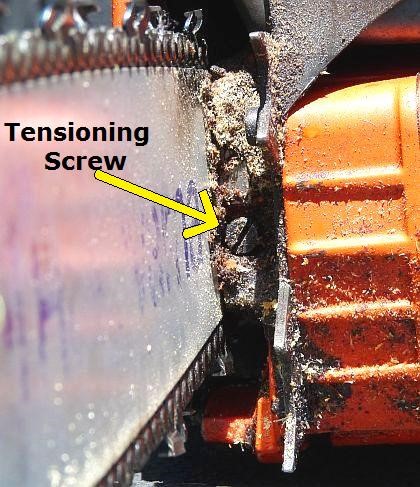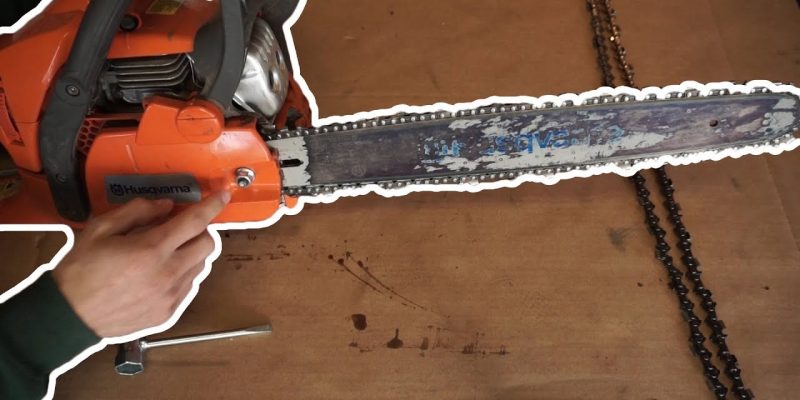Husqvarna chainsaw is one of the top brand chainsaws available in the market. A chain saw can be used for different purposes in our daily lives. But a Husqvarna chainsaw is perfect for household works, lighter cutting tasks, and hobby works.
They are top because of the inbuilt features such as ergonomic design, facilitating technology, and powerful X-TORQ® engine with low emissions. the chainsaw works by spinning a chain of saw blades along with a guide bar in motion. Both need to be in the sink with each other. Upon using the chainsaw for a longer period, the chains start to become loose.
If they become loose and still used, then the chain would break down as one of the saw blades comes out? This will break the chain which is risky for the user. This is the reason a Husqvarna chainsaw requires tightening of the chain at regular intervals of time to avoid this issue. The whole process is known as the tension of the chainsaw chain.
Tension a Chainsaw Chain
Before getting into the steps of how to tension a chain one must understand and tension and its importance in a chainsaw. The movement depends on the tension. There are two kinds of tension in a chainsaw chain. One is good tension, and the other is bad tension. Always keep checking the tension of the chain and ensure that it is in proper condition which is good tension.
Good Chain Tension

A chainsaw is having good tension if the chain is a little loose on the chainsaw guide bar. The chain should be tight enough so no one can pull the chain drive links from the guide bar. The below picture helps you understand in a better way.
Bad Chain Tension

A chainsaw is having poor tension if the chain drive links come out of the guide bar. The below picture helps you understand in a better way.
To decide whether the tension of the chain is required or not pull the chain links away from the guide bar and observe whether they are engaged or not. If yes, then the chainsaw is safe. If no, then tightening of chainsaw is required which is explained below.
Steps To the Tension of Chainsaw Chain
It involves a sequence of three steps that requires proper care and attention while doing it. These steps help beginners or experts to maintain their Husqvarna chainsaws. Please follow all steps carefully to avoid any trouble.
Loosen The Nuts on The Guide Bar Side Panel

The first step is to lose the nuts of the guide bar which is connected to a chain. Most of the chainsaws have their screwdriver or wrench to loosen the nuts as it matches the screw size and guide bar plate which are different according to the chainsaw model purchased from the market.
Use the wrench or driver to remove the side panel. In some cases, the brakes are attached to the side panel. For those chainsaws remove the brakes and then loosen the nuts to remove the side panel.
Adjust The Tension Screw

The second step of the process is to adjust the tensioning screws. One needs to locate the tension screw on the chainsaw. One can find it on the sides of the chainsaw guide bar. Once the screw is located you need to decide whether the screw requires tightening or loosening. Depending on the decision made the chain is tight or loose. Always check twice to ensure the chain is incorrect tension before going further.
Tightening The Nuts on The Guide Bar Panel
After checking the tension condition of the chainsaw, you need to tighten the nuts of the guide bar panel. If required lock the brakes again before tightening in some chainsaws. It is very simple to tighten them.
Lift the tip of the guide bar which is the nose of a chainsaw and stretch the chain by tightening the screws or nuts of the guide bar in a clockwise direction with a combination of screwdrivers or wrenches. Tighten the chain until it is in the sink with the guide bar. Be careful while lifting and placing it down again as it can hang slack on the underside of the bar. Check twice before you start.
Chainsaw Safety Equipment List:
- Husqvarna chainsaw functional gloves Class 0(16m/s.)
- Husqvarna chainsaw classic forset helmet.
- Husqvarna chainsaw safety clothing kit.
- Husqvarna functional 24 chainsaw boots class 2.
The reason for mentioning the safety equipment list is to spread that chainsaw is dangerous if it is misused. People tend to misuse it. For safety while using this list is mentioned. More items are there but these four are basic and important.
If the chainsaw is working fine, then you followed the steps correctly. Any time you have any doubts always seek professional help. Read the manual guide which explains the mode of operation of a chainsaw before beginning.
This helps you understand what actions are to be avoided while using or repairing. It is always important to check the Husqvarna chainsaw model and its before purchasing. Also, consider the requirements whether a particular chainsaw is correct or not. Sometimes the screwdriver and wrench from one model will be packed with another model.
To avoid all these confusion and problems make a habit of reading reviews of the product. To help in saving your time and money in reading reviews I recommend reading the Husqvarna 128cd review. Below is a picture of the Husqvarna 128cd gas-powered chainsaw. This can help you to get the best chainsaw for your use.










[…] in a few simple steps. The first and foremost stage is to take care of the chain. Before you learn how to tighten a chainsaw chain, the question, “How tight should the chainsaw chain be?” must have crossed your […]